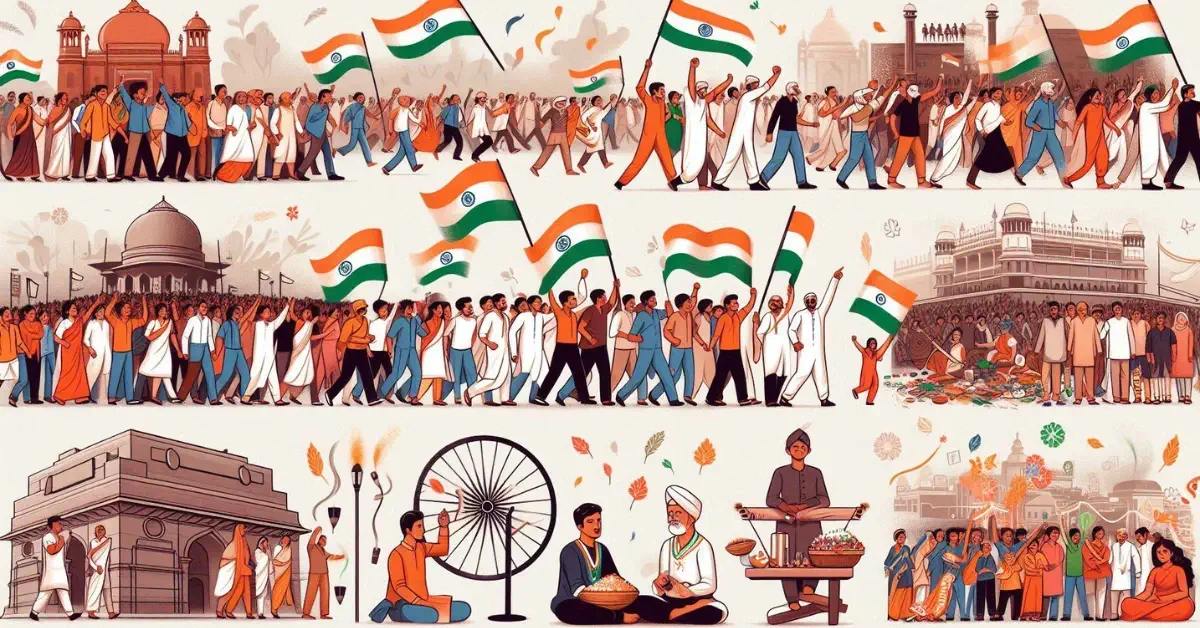How did people in India develop a sense of collective belonging during the national movement? Explain with examples!
Short Answer:
During the national movement, Indians developed a sense of collective belonging through shared experiences like participating in protests, singing patriotic songs, and adopting national symbols like the tricolour flag. For instance, the Dandi March united people in the fight against the salt tax. Personally, it reminds me of how shared struggles or victories, like working on a group project, create a strong bond among participants.
Detailed Answer:
The sense of collective belonging during the Indian national movement was nurtured through various cultural and political practices. Here’s how people came together, with examples and personal reflections:
- Adoption of National Symbols: Symbols like the tricolour flag, the charkha (spinning wheel), and “Vande Mataram” became icons of unity. These symbols represented the struggle for independence and were embraced by people across regions and communities. For example, during protests, waving the national flag united individuals from diverse backgrounds. Personally, waving the flag on Independence Day evokes similar pride—it feels like being part of a shared journey.
- Participation in Mass Movements: Movements like the Non-Cooperation Movement and the Civil Disobedience Movement saw people joining hands to fight against British policies. Events like the Dandi March exemplified collective action, as thousands followed Gandhi to protest the salt tax. This reminds me of participating in social campaigns where teamwork creates a shared purpose, making us feel part of something significant.
- Role of Festivals and Cultural Practices: Leaders like Bal Gangadhar Tilak turned festivals such as Ganesh Chaturthi into public platforms for mobilisation. These celebrations fostered unity by bringing people together for a common cause. Personally, attending community festivals feels similar—it’s not just about the rituals but the shared emotions and sense of togetherness they inspire.
- Rediscovery of India’s History: Nationalists highlighted India’s rich past through stories, literature, and historical studies. This instilled pride and a sense of belonging among Indians. For example, reading about ancient Indian achievements in school often left me in awe, making me feel connected to a long and inspiring legacy.
- Use of Print Media and Literature: Newspapers, pamphlets, and books played a vital role in spreading nationalist ideas. Works like Bankim Chandra Chatterjee’s Anandamath and its song “Vande Mataram” ignited patriotic feelings. Personally, reading inspiring stories or articles still has the power to move me, reminding me of shared values and struggles.
- Folk Traditions and Songs: Folk songs and performances carried messages of resistance to even the most remote villages. They used local idioms to connect people emotionally to the national movement. It’s like how listening to a nostalgic song can instantly create a bond with others who share that memory—it’s powerful and deeply personal.
A Personal Reflection:
The collective belonging created during the national movement wasn’t just political—it was emotional. It’s like being part of a family celebration; everyone might have different roles, but the joy, struggles, and goals tie them together. Similarly, the Indian national movement gave people shared experiences that forged an unshakeable unity.
Conclusion
Through symbols, protests, festivals, and cultural expressions, Indians developed a collective identity that transcended regional and cultural differences, making the dream of independence a shared vision.

